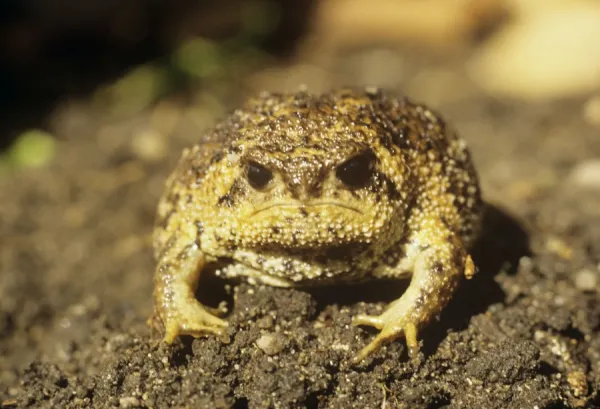Rain Frog for Sale: Boost Your Collection with Uncommon and Unique Amphibians!
Rain Frog for Sale: Boost Your Collection with Uncommon and Unique Amphibians!
Blog Article
The Very Best Reptile Enclosures: Just How to Develop the Ideal Habitat
Producing the ideal habitat for reptiles is not just about placing them in a storage tank or enclosure; it involves a thoughtful consideration of various factors that contribute to their total health. From the dimension of the room to the sort of substrate used, every element plays an essential role in providing a setting where your reptile can grow. By recognizing the certain requirements of your reptile species and implementing the right environment configuration, you can ensure their health and joy in bondage.
Choosing the Right Unit Dimension
When choosing an enclosure dimension for reptiles, it is critical to consider their all-natural behaviors and room demands to ensure their health and health and wellness. When it comes to habitat room, different reptile varieties have differing needs. Arboreal varieties like chameleons or tree snakes call for vertical space for climbing up and perching, while earthbound species such as bearded dragons or leopard geckos require even more floor room for discovering and thermoregulation. Aquatic turtles like red-eared sliders demand units with both water and land locations for swimming and basking.
A general rule of thumb is to offer adequate space for the reptile to display all-natural actions, such as basking, concealing, climbing up, and foraging. By meticulously taking into consideration the specific needs of the reptile species in inquiry, proprietors can develop an ideal and improving environment that advertises general wellness and motivates natural behaviors.
Establishing Proper Burner
To make certain the health and wellness of reptiles in their units, it is vital to meticulously establish appropriate heating elements. Reptiles are ectothermic animals, suggesting they depend on outside warm sources to regulate their body temperature level. When establishing heating elements in a reptile unit, it is critical to consider the particular temperature demands of the varieties you are looking after. Different reptiles have differing temperature level needs based on their all-natural habitat, so it is essential to research and recognize these demands.
One reliable and common home heating element for reptile units is a heat light or ceramic heat emitter. These warm resources can be made use of to produce a temperature level gradient within the unit, allowing reptiles to relocate between warmer and cooler areas as required. Additionally, under-tank hot pad or heat mats can be made use of to offer stomach heat, which is especially beneficial for reptiles that need added warmth to help in food digestion.
Keeping an eye on the temperature level within the enclosure using a thermometer is important to ensure that the burner are preserving the ideal temperature level range for your reptile. Routinely inspect and change the burner as required to produce a healthy and balanced and comfy setting for your flaky close friend.
Picking Appropriate Lights Components

Supplying the Perfect Substratum
Picking the ideal substratum is vital for producing a ideal and comfortable environment for reptiles in their units. Some reptiles, such as desert-dwelling varieties like bearded dragons, flourish on substrates like calcium sand or reptile carpeting, while others, like sphere pythons, choose coconut husk or aspen bedding to keep humidity levels.
In addition, the dimension of the reptile should additionally affect your choice of substratum, as hatchlings may require a better check my reference material to avoid intake. Avoid substratums that can trigger impaction, such as loose substratums like sand or gravel, specifically for reptiles known to consume their bed linen. Frequently cleaning and replacing the substrate is vital to make certain a hygienic and clean environment for your reptile. By picking the ideal substratum, you can add to the total health and wellness of your flaky companion.
Designing for Enrichment and Comfort
Taking into consideration the substrate's duty in offering a foundation for natural habits and preserving an appropriate atmosphere, enhancing the reptile enclosure with proper decors is vital for both enrichment and comfort. Decors such as branches, rocks, hideouts, and fabricated plants not just create a much more aesthetically appealing environment yet also offer practical objectives. Branches supply climbing chances for arboreal varieties, while rocks can click here for more info work as basking areas for heat. Hideouts provide sanctuary and safety and security, minimizing anxiety degrees for the reptile. Artificial plants not just enhance the looks but also give hiding areas and enrichment by permitting the reptile to engage and check out with its setting. When decorating the enclosure, it is vital to consider the reptile's species-specific needs and behaviors to create a space that promotes mental and physical wellness. By incorporating a variety of decorations that simulate the reptile's natural habitat, proprietors can ensure their pet's comfort and stimulate their all-natural reactions, inevitably bring about a better and much healthier reptile.
Final Thought

Creating the ideal habitat for reptiles is not simply regarding placing them in a tank or enclosure; it entails a thoughtful consideration of different factors that add to their total well-being.Selecting the suitable substrate is essential for producing a appropriate and comfy atmosphere for reptiles in their enclosures. Some reptiles, such as desert-dwelling species like bearded dragons, thrive on substratums like calcium sand or reptile rug, while others, like ball pythons, choose coconut husk or aspen bed linens to keep humidity degrees.
By integrating a range of decorations that imitate the reptile's natural habitat, owners can ensure their family pet's convenience and stimulate their natural instincts, eventually leading to a happier and healthier reptile.
In conclusion, developing the optimal environment for reptiles includes picking the appropriate room size, home heating aspects, lighting components, substrate, and decors.
Report this page